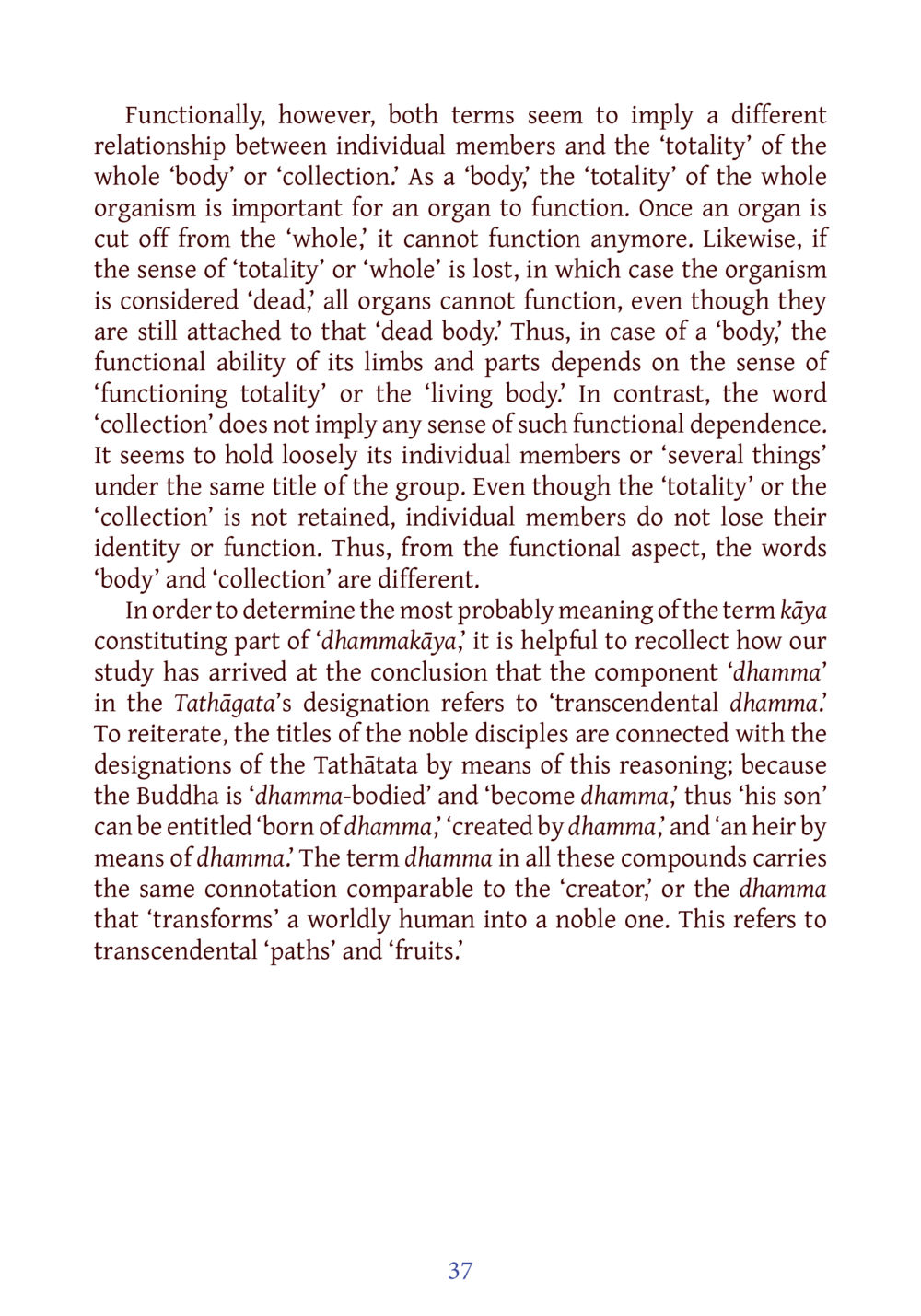Understanding the Concept of Body and Collection in Dhamma : หน้า 58/141
DIRI Journal : หน้า 58/141 Explores the functional relationship between individual members and the whole body or collection in Dhamma context.
5 ครั้ง

สรุปเนื้อหา
This text analyzes the distinctions between the terms 'body' and 'collection' within the framework of Dhamma, particularly focusing on functional dependence. It argues that while a 'body' maintains essential relationships with functional organs, a 'collection' allows individual elements to retain identity independently. The importance of the term kāya in 'dhammakāya' is also explored, linking the transcendental nature of dhamma as vital for transformation and achieving nobility. The reasoning behind the titles related to Tathāgata emphasizes the concept that Buddha embodies dhamma and serves as the creator of noble disciples who inherit this dhamma. This establishes a clear understanding of the functional aspect of these terms and their implications in spiritual development.
หัวข้อประเด็น
-Functional relationship between body and collection
-Distinction between terms in Dhamma
-Importance of totality in Buddhist context
-Understanding kāya in dhammakāya
-Transcendental dhamma and its implications
ข้อความต้นฉบับในหน้า
หน้าหนังสือทั้งหมด













































































































































